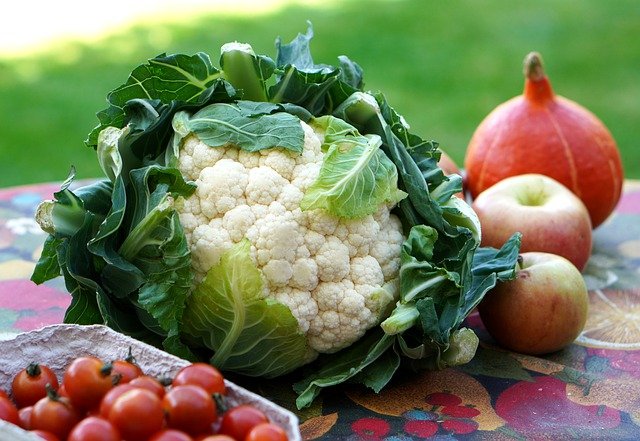The demand for all things cauliflower has hit an impressive high these past few years. As part of the low-carb, gluten-free craze, cauliflower has been riced, passed off as potatoes, and made into pizza crust.
What’s not to love? Let’s take a closer look at this affordable, nutritious, versatile veggie.
Cauliflower 101:
Cauliflower is thought to have originated in Asia, though it became a popular crop in the Mediterranean regions of Syria, Turkey, Italy, and Spain around 600 BC. Most of the US cauliflower supply comes from California, but it’s also grown in Arizona and Oregon. While it’s a cool-season vegetable, cauliflower can be enjoyed all year round.
As part of the Brassica oleracea family along with cabbage, Bok choy, broccoli, kale, and Brussels sprouts, the Latin meaning of cauliflower is “the flowers of a cabbage”. Cauliflower is often dubbed “white broccoli” and its flavor is similar to but milder than its green cousin.
Health Benefits of Cauliflower:
It’s great that cauliflower is used in so many dishes as it has quite a bit of nutritional prowess. Cauliflower is low in calories and carbs and is a source of vitamin C. Like other vegetables in the cabbage family, cauliflower is a source of sulforaphane, an antioxidant that may protect against several types of cancer as well as heart disease. 1
In addition to reducing the risk of cancer, the sulforaphane in cauliflower may also play a role in preventing the progression of Alzheimer’s, Huntington’s, and Parkinson’s disease, cerebral ischemia, MS, epilepsy, and psychiatric conditions as it aids in neurogenesis and reduction of oxidation stress and inflammation. 2
A phytochemical in cauliflower may also be beneficial in reducing pain related to endometriosis. Cauliflower contains quercetin, a flavanol that’s been found to have antioxidant, antiangiogenic, and anti-inflammatory properties. A recent study showed that quercetin altered the cell cycle and markers of inflammation in treated mice compared to controls. Researchers believe this could be used in humans as well. 3
Use Your Head (of Cauliflower):
As mentioned above, cauliflower can be used to replace rice or as part of an alternative to traditional pizza crust, but there are so many other ways to enjoy it!
Here are a few to try:
- Dice cauliflower and add it raw to your favorite salad or slaw.
- Pair fresh cauliflower and other veggies with a yogurt dip or hummus.
- Roast cauliflower with curry, turmeric, and other Indian spices.
- Make buffalo cauliflower bites and serve with hot sauce.
- Stir fry cauliflower with broccoli, peppers, and onions.
- Try air-fried cauliflower tossed in olive oil and garlic.
- Add riced cauliflower to grain bowls with beans or lentils.
By Lisa Andrews, MEd, RD, LD
Copyright foodandhealth.com, reprinted with permission

